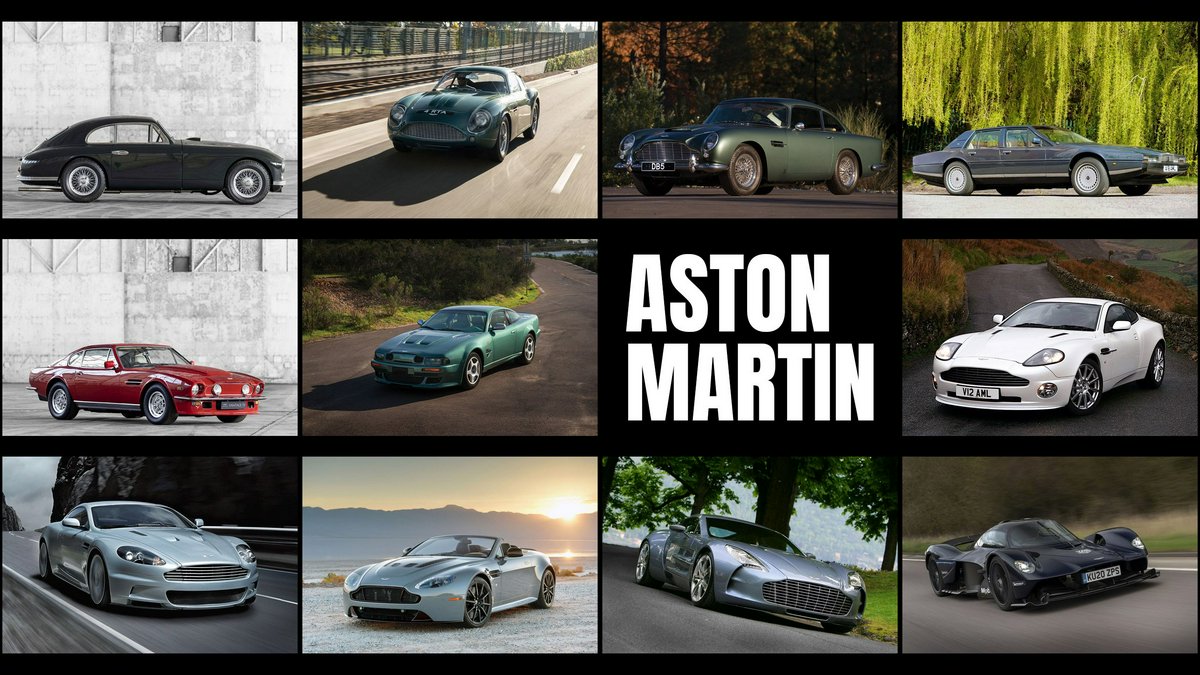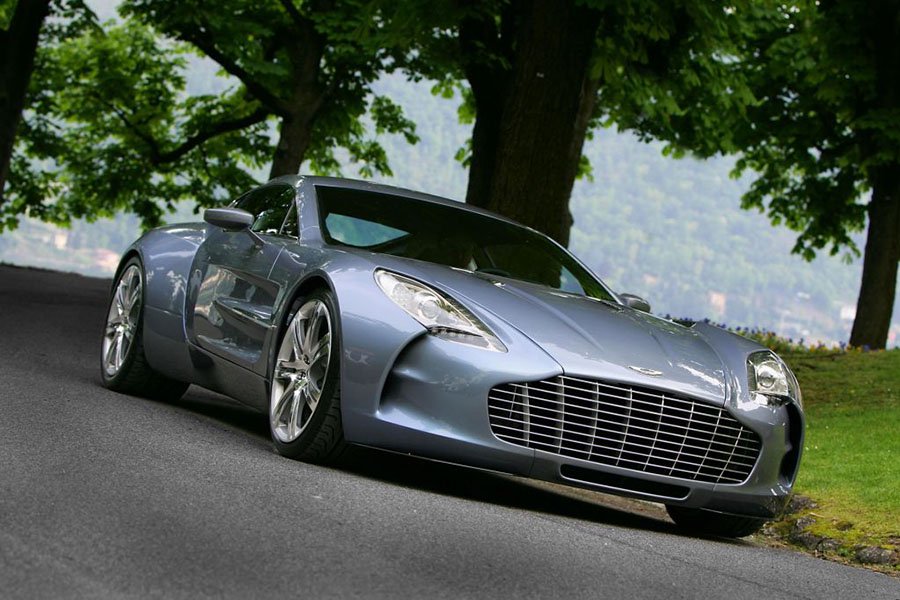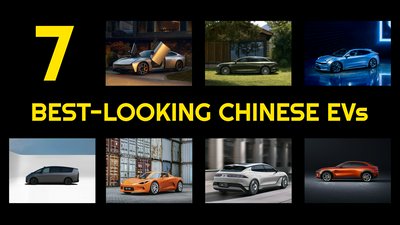techXXX
Eleven Iconic, Most Collectible Aston Martin Motor Cars
Collectible Aston Martins are known for their rarity, design, performance, and craftsmanship. Today, I briefly present 11 iconic, most collectible Aston Martin vehicles.
Published by Dr Jiulin Teng on 02 Sep 2024

Aston Martin began as a boutique automaker and earned some racing success in the 1920s. It grew into a household name of luxury grand tourers after WW2 under the ownership of David Brown. Over the years, and despite its two-decade stint as a subsidiary of Ford, Aston Martin has remained exclusive and largely hand-built. Collectible Aston Martins are known for their rarity, design, performance, and craftsmanship. Today, I briefly present 11 iconic, most collectible Aston Martin vehicles.

DB2
- 1950–1953
The DB2 was a significant model for laying the foundation for the DB series, establishing Aston Martin’s reputation in racing and luxury and setting the design language for models over two decades. It was powered by a 2.6L DOHC inline-6 engine designed by W. O. Bentley. It produced 105hp in base form and 125hp with the Vantage upgrade option. The DB2 was available both as coupe and drophead coupe. It is treasured today for its historical significance and elegant design.

DB4 GT Zagato
- 1960–1963
The DB4 was the first in a series of Aston Martins designed and bodied by Carrozzeria Touring using its superleggera construction. It was also the first car to use a new 3.7L DOHC inline-6 engine designed by Tadek Marek as well as servo-assisted disc brakes all around. The DB4 GT Zagato was shortened and lightened, and its engine got a tune that bumped the power output from 240hp in the standard car to 314hp. It uses three Weber carburetors and was paired to a 4-speed manual transmission. With only 19 built and known for its gorgeous design, the DB4 GT Zagato is one of the rarest and most valuable Aston Martins. Six further units have been built in later years to fill the unused chassis numbers, as the original production number was planned to be 25. Their price tag in 1988 was $1 million.

DB5
- 1963–1965
The DB5 was an evolution of DB4, though it is perhaps the most iconic Aston Martin, thanks to its association with the James Bond franchise, starting with Goldfinger. Its inline-6 engine was enlarged to 4L, producing 282hp. The Vantage option with three Weber carburetors and a modified camshaft bumped the power to 325hp. A new ZF 5-speed manual transmission replaced the old 4-speed unit, while 3-speed automatic was optional. Due to its commercial success, only those in pristine condition or with a James Bond connection now fetch the big bucks, though all DB5s are highly sought after today.

Lagonda
- 1976–1990
The Lagonda was a unique luxury sedan known for its futuristic design and advanced technology. While the Series 1 cars were just four-door variants of the Aston Martin V8, it was quickly redesigned and relaunched in 1976 with the now-classic wedge shape body. It was powered by a 5.3L DOHC V8 that produced 280hp paired to a 5-speed manual or 3-speed automatic transmission. Besides its distinctive exterior design, the Lagonda is also known for its pop-up headlights as well as digital LCD dashboards and touch button controls. It later also introduced CRT instrumentation. The Lagonda was priced higher than Ferrari 400 but its electronic gadgetry was known to be highly unreliable.

V8 Vantage
- 1977–1989
The V8 Vantage was the high-performance version of the Aston Martin V8. Known as “Britain’s first supercar”, the V8 Vantage was Aston Martin’s answer to the Ferrari Daytona. Its 5.3L DOHC V8 engine with four Weber carburetors produced 390hp. From 1986, power output was bumped to 403hp, while a 6.3L version produced 450hp. Available both as coupe and convertible, the V8 Vantage’s muscular design and performance made it a symbol of 1970s and 1980s British luxury. The V8 Vantage was again used by James Bond.

Vantage V600 Le Mans
- 1999
The Virage replaced the Aston Martin V8 in 1989 with more subdued styling. From 1993, the high-performance Vantage V550 model added two Roots-type superchargers that bumped the 5.3L V8’s output to 550hp, which was paired to a ZF 6-speed manual transmission. To celebrate the 40th anniversary of Aston Martin’s 1959 Le Mans victory, the V600 Le Mans was introduced with two upgraded Eaton M90 superchargers to produce 604hp. The V600 Le Mans also featured a broad range of upgrades in suspensions and amenities. With only 40 units produced, the Vantage V600 Le Mans is one of the rarest and most powerful Aston Martins of its era and is highly coveted by collectors.

V12 Vanquish / Vanquish S
- 2001–2007
The V12 Vanquish was the flagship of Aston Martin in the early 2000s. An evolution of the DB7 Vantage, the Vanquish launched with its 5.9L DOHC V12 engine producing 460hp. Facelifted cars, known as V12 Vanquish S, produced 520hp. Six-speed manual or automated manual transmissions were available. The Vanquish featured a unique bonded aluminum composite chassis with a carbon fiber backbone developed with Lotus. Designed by Ian Callum, the Vanquish was the quintessential modern British GT that stood on its own against Italian exotics. It was also known as a Bond car.

DBS
- 2008–2012
The 2008 DBS was a revival of the name based on the DB9, which is often credited with revitalizing the Aston Martin brand in the 21st century. Being the high-performance flagship, the DBS was powered by a 5.9L DOHC V12 that produced 510hp mated to a 6-speed manual or automatic transaxle via a carbon fiber shaft. It also introduced carbon ceramic brakes to the marque. Available both as coupe and convertible, the DBS offers a blend of timeless design, superb craftsmanship, and advanced technology. Like many iconic Aston Martins, the DBS was a Bond car, driven notably by Daniel Craig in his 007 debut, Casino Royale.

One-77
- 2009–2012
The One-77 was Aston Martin’s first attempt to build a hyper car. In a showcase of Aston Martin’s depth in performance and craftsmanship, the One-77 combines cutting-edge technology with bespoke construction. It featured a full carbon fiber monocoque chassis with handcrafted aluminum body, pushrod suspensions, and a massive 7.3L DOHC V12. Built by Cosworth, this engine produced 750hp, which made it the most powerful production naturally aspirated engine in the world. A 6-speed automated manual transaxle was used, too. The One-77 is considered one of the most desirable modern Aston Martins thanks to its rarity and performance.

V12 Vantage / V12 Vantage S
- 2009–2018
The V12 Vantage was a sports car that combined Aston Martin’s smallest car with its largest engine for a raw and thrilling driving experience. The original version used the V12 from the DBS with 510hp. From 2013, the V12 Vantage S got a power bump to 565hp and a new 7-speed Speedshift III automated manual transmission, while a 7-speed manual was added back in 2016. With exhilarating performance and classic Aston Martin elegance, the V12 Vantage represented the modern peak of the quintessential British sports car. Its most special version came at the end of the production run in the form of the Vantage V600 with a power output of 600PS and a 7-speed manual transmission.

Valkyrie
- 2021–Present
The Valkyrie is a mid-engine hyper car that drew heavily from Aston Martin’s racing activities. It is powered by the Cosworth RA 6.5L DOHC V12 engine that produces 1000hp and revs to 11000 rpm, which make it not only the most powerful production naturally aspirated engine but also the best V12 ever created by man. This was paired to a hybrid system that further boosts power and especially torque at low rpm. Another iconic feature is the use of gullwing doors in the Valkyrie coupe, though the Spider has to do with butterfly doors. With cutting-edge technology, glorious naturally aspirated V12 engine, and rear-wheel drive, the Valkyrie is certainly a future classic.



